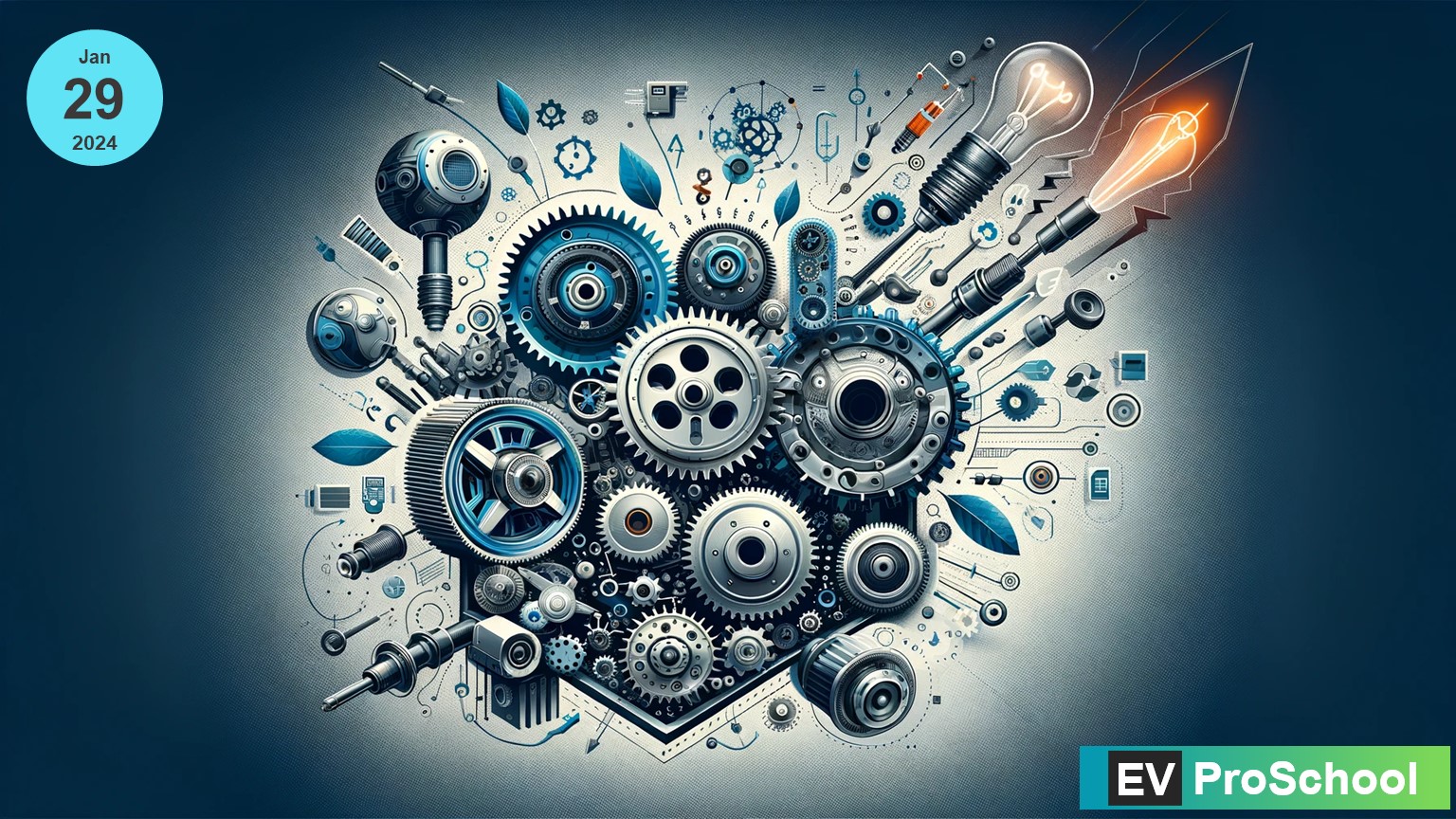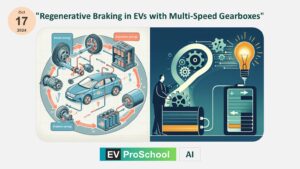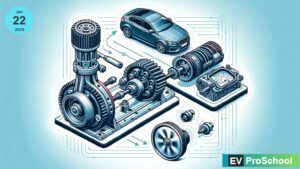As the world embraces the electrification of transportation, the demand for skilled engineers in the electric vehicle (EV) segment is skyrocketing. One fundamental concept that every aspiring EV engineer must understand is gear ratios and their role in gearboxes. In this blog post, we will delve into the significance of gear ratios, their impact on EV performance, and how mastering these concepts can empower your career in the rapidly growing electric vehicle industry in India and beyond.
Understanding Gear Ratios
Gear ratios are at the heart of a transmission system, be it in vehicles or machinery. They define the relationship between the rotational speed and torque at the input and output shafts of a transmission. There are two crucial types of gear ratios:
- Speed Ratio: This ratio compares the rotational speed (RPM) of the input shaft to that of the output shaft. It determines how fast the output shaft rotates compared to the input, affecting the speed of the vehicle.
- Torque Ratio: This ratio compares the torque (rotational force) at the input shaft to that at the output shaft. It influences the force or power delivered by the transmission system.
Implications of Gear Ratio Selection:
The choice of gear ratio significantly impacts the performance and characteristics of an EV:
- Speed and Torque Conversion: Gear ratios enable the conversion of high rotational speed and low torque to low rotational speed and high torque, and vice versa. EVs can optimize performance at various speeds, such as smooth acceleration, climbing steep inclines, or achieving high-speed cruising, by selecting appropriate gear ratios.
- Power Transmission Efficiency: Properly selected gear ratios maximize power transfer while minimizing energy losses due to friction and inefficiencies. Efficient power transmission is crucial for overall EV performance and range.
- Mechanical Advantage: Gear ratios offer mechanical advantage by multiplying or dividing torque output. Lower gear ratios provide higher torque output for tasks requiring high force, such as towing, while higher gear ratios offer higher rotational speed for faster acceleration.
- Control and Performance: Gear ratios influence the responsiveness and control of the vehicle. Proper gear selection ensures greater control during low-speed maneuvers and smooth operation at high speeds.
Solid vs. Independent Axle:
In the context of EV gearboxes, another essential consideration is the design of the output shaft. A solid and larger diameter output shaft is preferred for several reasons:
- Torque Transmission: A larger diameter output shaft provides better strength and rigidity, ensuring effective transmission of high torque from the motor to the wheels.
- Power Handling: EVs require high power output for efficient acceleration. A thicker output shaft can handle the increased power transmission capacity without compromising reliability.
- Durability and Longevity: EV gearboxes are subjected to demanding conditions. A sturdy output shaft enhances the overall durability and longevity of the gearbox, ensuring smooth and reliable operation over time.
- Weight Distribution: Achieving optimal weight distribution in EVs enhances handling and performance. Adjusting the output shaft’s diameter can help balance the vehicle’s overall weight distribution.
Empowering Your EV Career: A Vision for India’s Future
India’s electric vehicle industry is rapidly growing, driven by the country’s vision to become a developed nation with a skilled and sustainable workforce. Aspiring EV engineers have a critical role in shaping this future. By mastering gear ratios, understanding gearboxes, and staying abreast of cutting-edge EV technologies, you can pave the way for a successful career in this exciting field.
Conclusion: Gear Up for the Electric Revolution
In the pursuit of a greener and more sustainable tomorrow, electric vehicles are leading the charge. By comprehending the mechanics of gear ratios, the workings of gearboxes, and the nuances of output shaft design, you will be well-equipped to make your mark in the electrifying world of EVs. As India accelerates its journey towards electrification, skilled engineers like you will be the driving force behind the nation’s transformation and progress. So, gear up, embrace the electric revolution, and embark on an electrifying journey towards a brighter future.
Suggested Questions:
Advantages of Using Single-Speed Gearboxes in Electric Vehicles (EVs)
How does regenerative Braking work in EVs with multi Speed gearbox



